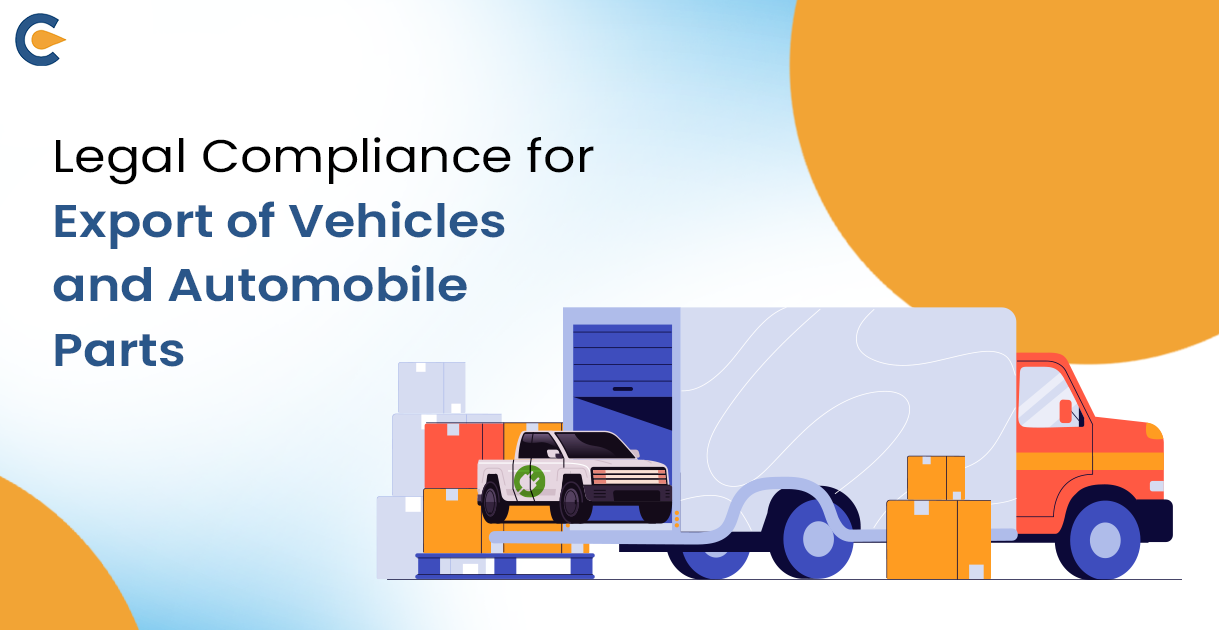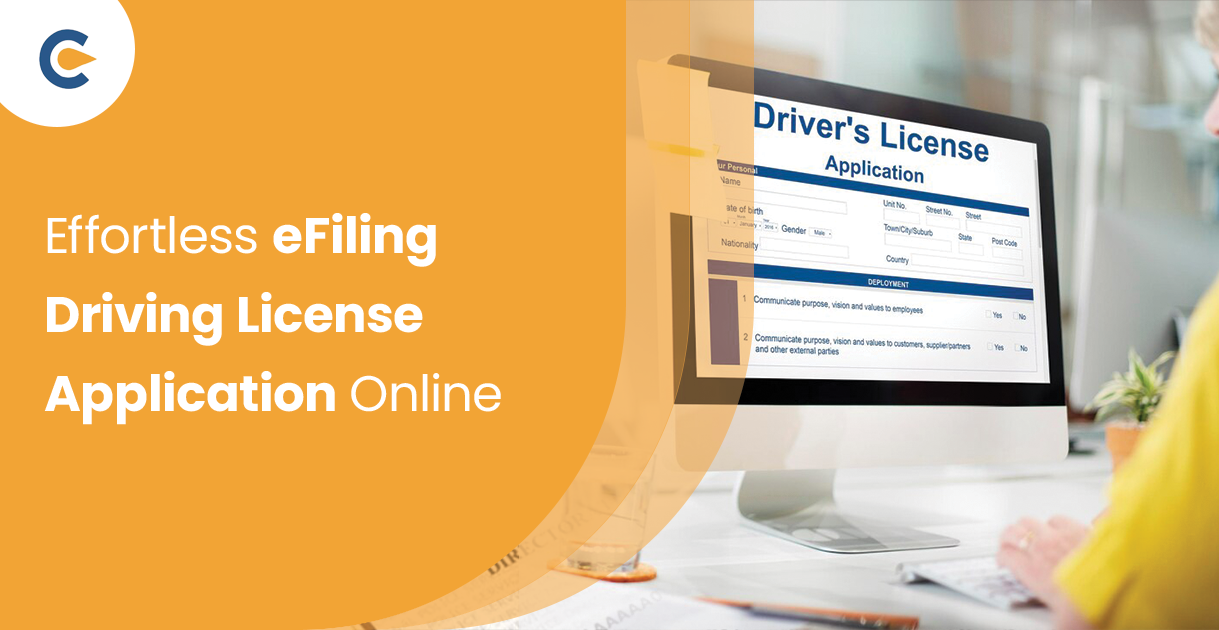In 2018, the Indian automobile sector produced more than four million commercial cars. Exports from this sector have grown steadily in recent years. In the fiscal year 2020-21, India shipped more than four million automobiles. India is renowned for being the world’s biggest manufacturer of two-wheelers. The Society of Indian Automobile Manufacturers (SIAM) said that in November, there was a 20.37 per cent increase in the export of passenger cars. 2020 research shows that Ford, Chevrolet, Hyundai, Nissan, Maruti Suzuki, Toyota, and other automakers are among those that export automobiles from India.India had a 15% increase in car exports in the 2023 fiscal year. From 2023 to 2027, this number is projected to increase at a compound annual growth rate of 3.04 per cent.
Regulations for Export of Vehicles and Automobile Parts
Various requirements apply to the export of auto and vehicle parts: When someone tries to export a car and its parts, they have to provide the VIN (vehicle identification number), which is used to identify the car and its paperwork, to customs officials at the exportation port. The Product Identification Number is required in the event that the vehicle is missing its VIN number. If these numbers are not provided, the product cannot be exported. Original authorized copies of the document in question and copies of the original certified copy are required in the event of the exporting of vehicle and automobile replacement parts, such as trucks, motorbikes, buses, etc. All the documents are to be submitted three days in advance.
Advantages of Legal Compliance in India for Export of Vehicles and Automobile Parts
Complying with established rules and regulations by the authorities is always mandatory. Some of the advantages of legal compliance in India for the export of vehicles and automobile parts are as follows:
Access in Market
Adherence to legal standards for the export of vehicles and automobile parts helps the business expand and get access to new markets. The export of vehicles and automobile parts opens new opportunities for the business as well.
Global Expansion
The export of vehicles and automobile parts leads to the global expansion of business. When the business follows all the rules and regulations, the business creates goodwill, which helps in its global expansion.
Reduced Operational Risks
Exporting has some operational risk, which may be reduced with compliance. Regulation comprehension and observance lower the risk of hiccups, such as rejected applications, delayed shipments, or product recalls brought on by non-compliance.
Enhanced Reputation and Trust
When a business is in compliance with all the export laws and regulations, the business gains the customer’s trust and reputation.
Competitive Advantage
When the business adheres to legal compliance for the export of vehicles and automobile parts, it gives the business a competitive edge in the market. The consumers watch the business in a positive light.
Reduced Risks of Penalties and Fines
One of the most vital benefits of legal compliance at the time of export of vehicles and automobile parts is to reduce the risk of fines and penalties, which can lead to loss to the business. When all laws are adhered to, this risk is minimized.
What is VIN for Export of Vehicles and Automobile Parts?
Every car in India is assigned a Chassis Number, also known as a Vehicle Identification Number (VIN), which is a special identification code. This VIN for the export of vehicles and automobile parts is made up of both numbers and letters and is essential for figuring out the maker, specs, and manufacturing information of a car. A distinct alphanumeric identifier also referred to as the chassis number, is given to every car. In addition to acting as the vehicle’s principal identification, VIN for export of vehicles and automobile parts offers detailed information about the make, model, year of manufacture, and other unique features. Vehicle identification, insurance, registration, history monitoring, safety recalls, and theft prevention measures all depend on the vehicle identification number (VIN).
For registering a vehicle identification number:
Vehicle registration is required at the regional transport office (RTO).Your vehicle’s registration document contains the VIN or chassis number printed on it by the RTO. The VIN is often located on the driver’s side of the automobile and is printed by a small number of automakers on the dashboard.
Export Duty on Export of Vehicles and Automobile Parts
When auto parts are exported from India to foreign nations, the government imposes export duties. Included in the category of auto parts are 87082900, 87149990, 87089900, 90279090, 87083000, and so on. This tool aids in determining the amount of export duty and customs that must be paid when exporting auto components from India. In addition, the export order must cover the auto part’s tariff and taxes in order to receive customs clearance and assist you with the many processes involved in exporting auto parts from India. Moreover, it provides details on Indian laws and regulations pertaining to the export of auto components and vehicle parts.
Permission and Licenses required for Export of Vehicles and Automobile Parts
For the export of vehicles and automobile parts, there are many different types of permissions that are required by the business owner. There are also some licenses required for the export of vehicles and automobile parts. It is very crucial to understand and possess all these below-mentioned licenses and permissions before the export of vehicles and automobile parts from India:
Registration for Goods and Services Tax (GST):
Someone launching a new business must register for GST. Consequently, exporters must get a GST certificate.
Import and Export Code:
The import and export code, or IEC, is a registration requirement for expanding a firm on the international market. The Director General of Foreign Trade (DGFT) issues this registration code to a business entity so they can import and export goods into India.
ISO Certification:
The export of car components requires an ISO certificate. The goal of ISO standards, especially ISO 9001, is to guarantee the quality of products and services. In the automotive sector, where performance and safety are paramount, organizations can establish and sustain effective quality management systems by adhering to ISO 9001 standards.
Certificate of Incorporation:
Initially, a business must incorporate a company in order to establish itself as a sole proprietorship, partnership, or other legal organization.
PAN Registration:
In order to export automobile items, a PAN card bearing the company’s name must be submitted. Every exporter must apply for and receive a PAN card under their company name.
Export of Vehicles and Automobile Parts: Documents for Export Clearance
Various documents are required during the time of and prior to the export of vehicles and automobile parts from India. Following are some of the documents that are necessary at the time of export of vehicle and automobile parts:
Form for Custom Declaration:
The Universal Postal Union (UPU) issues this form, which contains details on the goods being imported and exported. However, we can also state that it is a legal document that permits the export or import of the goods in accordance with the specified customs process.
Dispatch Note:
This is the document that the exporter fills out outlining the steps the customs agency will follow should the product not be delivered or be denied for any reason.
Commercial Invoice:
In accordance with trade terms and regulations, it is provided by the exporter for the entire accessible quantity of products.
Certificate of Country of Origin (COO):
This document attests to the fact that the items imported into a certain nation came from a specific export cargo. It is often employed in cross-border commerce transactions.
Certificate of Insurance:
The exporter must possess insurance that covers the goods being exported.
Customs Invoice:
Nations like the USA, Canada, etc., need it. It makes it easier for the items to enter the nation of import at a lower tariff rate.
Certified Invoice:
When the exporter attests on the invoice that the products are manufactured/packed at a certain location or are of a specific origin, this certification is necessary.
Purchase Order/Credit Letter:
It is a business document that a buyer issues to a seller that lists the kinds, amounts, and prices of products and services that have been agreed upon.
Export of Vehicles and Automobile Parts: Best Practices of Ensuring Compliance
It is important to ensure that best practices are used to ensure compliance for export. Below are some of the best practices that business owners can use to ensure legal compliance for the export of vehicles and automobile parts:
Accurate Documentation
Make sure all documentation pertaining to exports is correct, comprehensive, and complies with the necessary requirements. This covers export permits, customs declarations, origin certifications, and any other documentation that may be required.
To Stay Updated with Export Laws
Keep a regular eye on and remain updated on any changes to export laws, rules, and mandates from the appropriate government agencies or authorities. Join networks or trade groups to receive updates.
Compliance of Quality Standards
Comply with the certification requirements and quality standards for parts that are shipped. To maintain consistent product quality and fulfil international standards, implement strong quality control procedures.
Comprehensive Understanding of Regulatory Requirements
Gain a thorough grasp of all the export laws and guidelines pertaining to the export of automobiles and auto components from India. The standards for compliance may vary between components.
Conclusion
In conclusion, India is the world’s top producer of both vehicles and auto parts. It has auto parts factories and exports them to automakers, merchants, and repair shops. Some of the reasons this is a profitable business are discussed below. It is one of the industries with highly expanding demand, both in India and internationally. In addition, the automobile business has a huge market share, and nearly everyone requires a car or auto parts for their own vehicle.
Frequently Asked Questions
For example, if a car is made in India, its VIN will begin with MA-ME and MZ. The manufacturer’s data are provided by the second and third numbers. The first three letters stand for “World Manufacturer Identifier,” which provides information about the vehicle’s manufacturer.
An automobile’s unique identification number is called a Vehicle Identification Number (VIN). A vehicle’s unique identification number (VIN) is made up of 17 characters, including letters and numbers. The manufacturer, specifics, and unique features of an automobile are displayed by its VIN.
The unique vehicle identification number (VIN), also referred to as the chassis number, is one that the manufacturer assigns to your vehicle. The registration authorities use this number to register your vehicle through the car’s chassis number.
The Indian government increases the customs charge on a number of car parts to 15% in Budget 2021 in an effort to promote domestic production. The Indian government suggested raising the customs levy on some imported vehicle parts that are commonly utilized in the automotive industry in an effort to boost home grown producers.
Yes, automobile parts are exported from India. India is the world’s top exporter of auto spare parts, with the majority of its goods going to Sri Lanka, Indonesia, and the United Kingdom.
There are two separate GST rates applicable to vehicle components: 18% and 28%. Approximately 60% of our output is subject to 18% taxes, with the remaining 40% subject to 28% taxes.
In India, an automotive dealer’s average dealer margin is 4-5% on the cost of the car and 15-20% on the cost of the spare components. Globally, the margins are around 7-8% on the cost of the vehicle and 30-40% on the cost of replacement parts. Foreign investments are also higher than Indian investments.
What does ISO certification entail? The International Organization for Standardization publishes worldwide standards, and ISO certification is a third-party body’s endorsement that a business adheres to its requirements.
Gaining recognition as a first-rate, high-quality brand in the international business sectors will be facilitated by the export house’s possession of an internationally accredited certification.
Exports of goods or services are regarded as interstate supplies under the GST. As a result, all goods exporters are required under Section 24 of the CGST Act of 2017 to register for GST. Nonetheless, a service exporter is excluded from registering for GST if its yearly revenue is less than the Rs 20 lakh threshold.
An IEC registration certificate is required for any company that engages in import or export. Therefore, in order to pass customs, an importer must confirm that the importing entity has an IE code and a GST registration before beginning an import of goods into India.
If the products are being imported or exported for personal use only and are not being utilized for business reasons, there is no need to get an Import Export Code (IEC). Obtaining an import export code is not necessary for export/import operations carried out by Departments, Ministries, and notified charitable organizations of the Government of India.
The Foreign Trade (Development & Regulation) Act of 1992 (complete text) and India’s Export-Import (EXIM) Policy oversee the country’s import and export practices. All products are free to import and export, with the exception of those that are governed by the EXIM policy or any other active legislation.
Read Our Article: Checklist for FY 2022-23 GST Compliance











